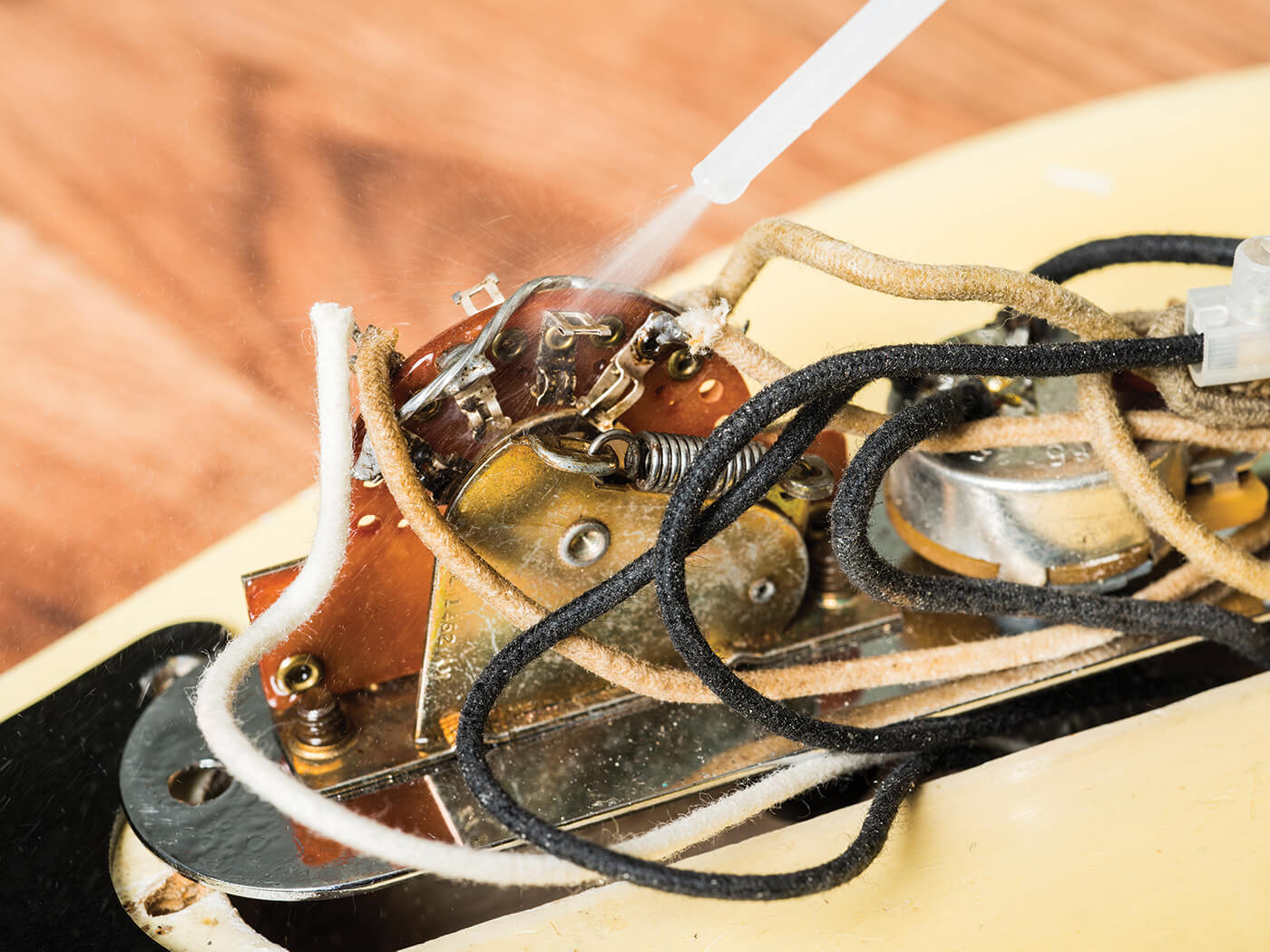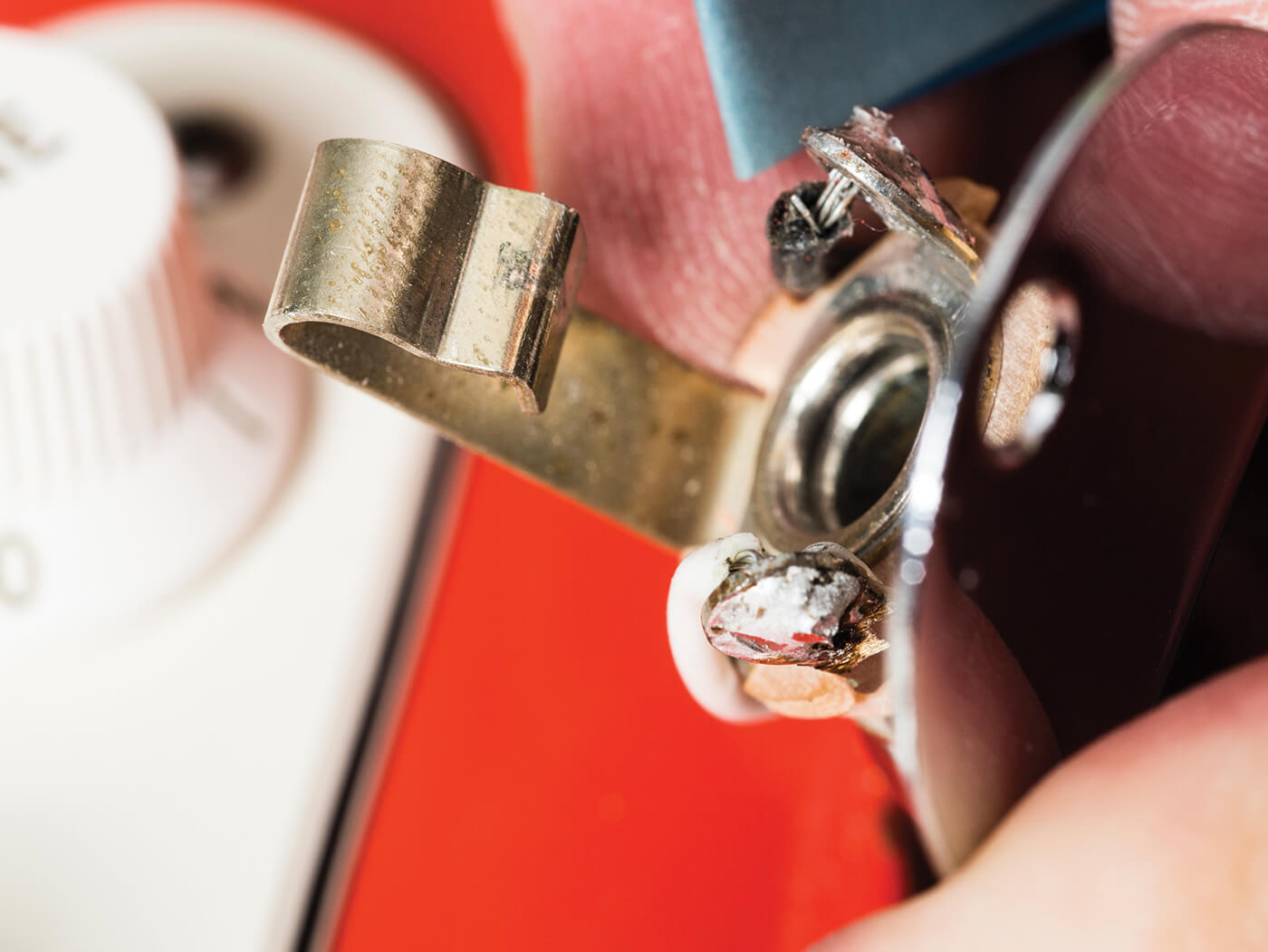Related Tags
How to clean output jacks, pots and switches
Keep your instrument’s circuitry in top condition.

Aim the contact cleaner’s extension tube at the switch contacts then, after spraying, work the switch back and forth rapidly several times
Why you need this
- Connections and controls are noisy or intermittent
What you need
- Contact cleaner spray
- Abrasive paper
There’s a bit of a knack to cleaning switches and control potentiometers. Firstly, you must ensure that the contact cleaner gets to the spots where it’s needed, so don’t lose the extension tube that plugs into the aerosol nozzle.

If you’re cleaning a pot, try to get the end of the tube firing into the open slot of the casing behind the solder tags. Sometimes, this just isn’t possible when the potentiometer is soldered onto a circuit board. Try squirting into one of the perforations in the pot casing instead.
If the pot is inside a semi-acoustic, buy yourself a ‘pot cleaning cap’ to direct the cleaner through the knob shaft and down into the casing. Things are generally easier to get at with open-frame Fender-style switches.

Once the switch cleaner has been applied, work the pot or switch back and forth vigorously. Repeat the process and, while you’re at it, do it again. The idea is to dislodge dirt or oxidisation and re-establish clean contact between the conductive surfaces.
Gibson-style toggle switches and jack sockets require a slightly different approach. Here, there are no moving parts, just contact points. Try spraying some contact cleaner onto some 800- or 1,000-grit abrasive and draw it across the contact points to expose clean metal. Remember, it’s invariably cheaper and easier to repair a part than it is to replace it.
Check out more of our DIY guides here.
